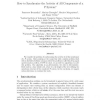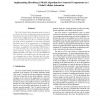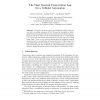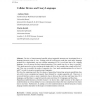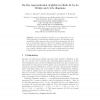367 search results - page 57 / 74 » Amalgamation of cellular automata |
IJFCS
2008
13 years 7 months ago
2008
We consider the problem of synchronizing the activity of all the membranes of a P system. After pointing at the connection with a similar problem dealt with in the field of cellul...
IPPS
2007
IEEE
14 years 1 months ago
2007
IEEE
The GCA (Global Cellular Automata) model consists of a collection of cells which change their states synchronously depending on the states of their neighbors like in the classical...
CSR
2008
Springer
13 years 9 months ago
2008
Springer
Abstract. We study the group-valued and semigroup-valued conservation laws in cellular automata (CA). We provide examples to distinguish between semigroup-valued, group-valued and ...
20
Voted
FUIN
2007
13 years 7 months ago
2007
Devices of interconnected parallel acting sequential automata are investigated from a language theoretic point of view. Starting with the well-known result that each unary language...
ACRI
2008
Springer
14 years 1 months ago
2008
Springer
Abstract. Rule 54, in Wolfram’s notation, is one of elementary yet complexly behaving one-dimensional cellular automata. The automaton supports gliders, glider guns and other non...
